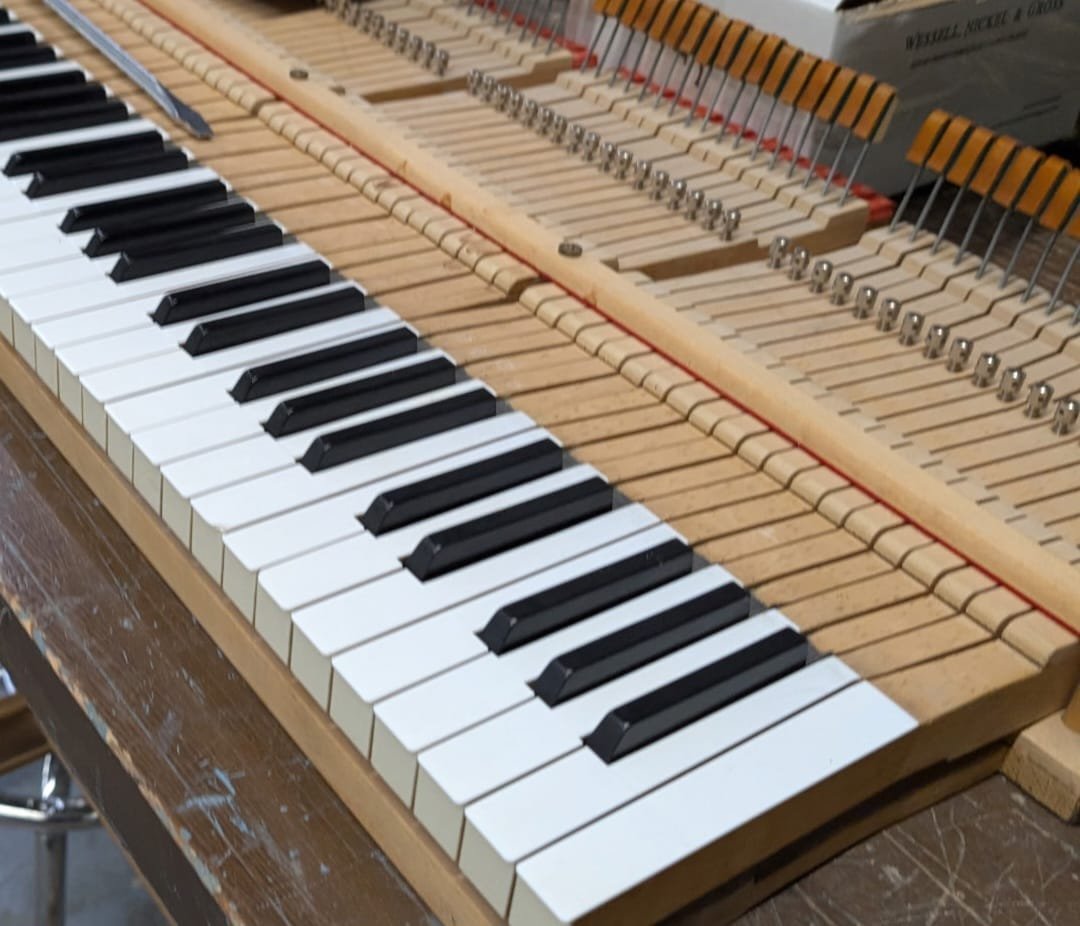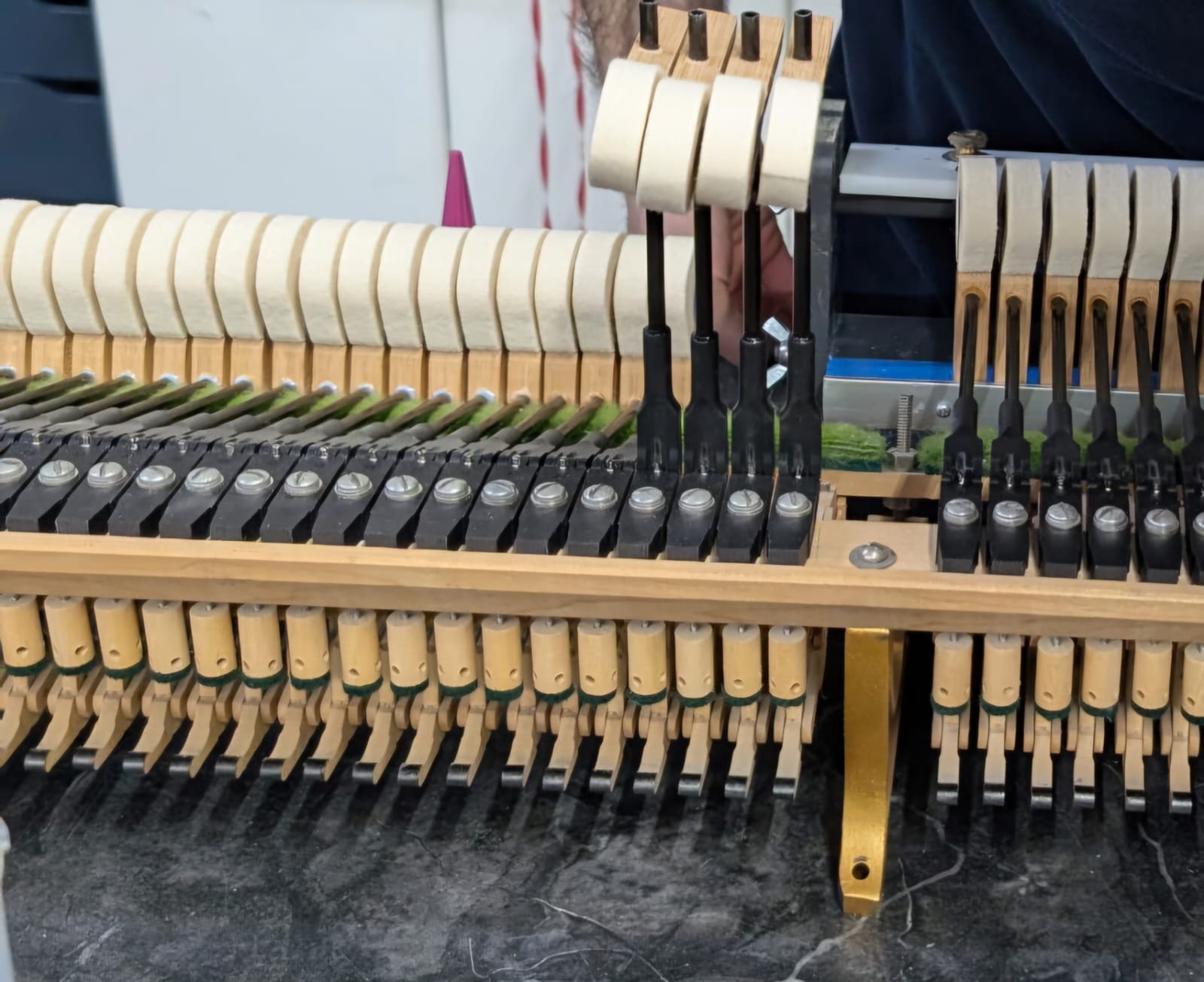Piano Regulation: What It Is and Why Your Piano Needs It
Does your piano feel unresponsive or difficult to control?
The issue might not be your playing technique – it could be that your piano needs regulation. In this blog post, we'll explore everything you need to know about piano regulation and why it's crucial for maintaining your instrument's performance.
What is Piano Regulation?
Piano regulation refers to the precise adjustment of your piano's mechanical parts to compensate for natural wear and tear over time. Think of piano regulation like the difference between an old truck and a finely tuned race car. When you steer an old truck, the steering wheel turns an inch or two before the tires start to turn – your efforts are wasted when the tires don't respond immediately. Similarly, an unregulated piano can feel inefficient, difficult to control, and unpredictable.
Why Piano Regulation Matters
A well-regulated piano brings your music to life by responding sensitively to your touch. When your piano is properly regulated, you'll find it easier to express yourself through your music, and playing becomes far more enjoyable.
A piano is the musician’s tool. Ask any skilled tradesperson… working with dull or misaligned tools makes it impossible to handle intricate tasks. If a piano doesn’t do what your hands are telling it to do, you are limited in your ability not only to express yourself but also in your ability to develop the skills required to be expressive in a highly effective way. Playing on an unregulated piano not only caps your ability to express yourself, it puts a cap on your musical education.
Regulation is essential, as it:
Allows for greater control over dynamics and repetition speed
Helps each key feel the same across the board
Compensates for natural wear such as compression of felt/leather/cloth in the piano
Optimizes the piano's overall responsiveness
Understanding Key Levelling
Key leveling is a crucial aspect of piano regulation that directly affects playability. In a properly regulated piano, each key has a precise range of motion – typically 10.5 mm, depending on the make. With such a teeny range of motion, accuracy is critical for proper piano function.
When keys aren't properly levelled:
Different keys require varying amounts of pressure to produce the same volume/tone
The range of motion becomes inconsistent across the keyboard
Your ability to express musical nuances is limited
The piano becomes less predictable and harder to control
How Piano Regulation Differs from Tuning and Voicing
Many piano owners confuse regulation with other maintenance services. While regulation addresses the feel of the piano, increasing the responsiveness and allowing the musician greater control over expression, tuning addresses the tension and therefore the pitch of the strings. By contrast, voicing deals with tonal qualities (e.g. mellow vs. bright, rich vs. pure).
Signs Your Piano Needs Regulation
Watch for these indicators that your piano may need regulation:
Uneven key response between neighboring keys
Difficulty achieving consistent fortissimo or pianissimo
Keys not repeating fast enough
Inconsistent key height or depth when viewing the keyboard from a distance
It feels like you need to physically try hard to get musical phrases to sound the way you’d like them to sound
How Often Should You Regulate Your Piano?
New pianos may need regulation within the first 2 years as materials settle. The frequency of regulation after purchase depends on the piano’s functionality and use:
Home Pianos: Every 5-10 years for casual players
Professional Pianos: Every 3-5 years with minor tweaks during tunings
Concert Pianos: At least annually, with regular maintenance throughout the year
If you haven’t had your piano regulated in 5-10 years, it’s time to have a technician assess the regulation.
The Impact of Climate on Piano Regulation
Environmental factors play a significant role in your piano's regulation needs. Wooden parts expand and contract as the humidity changes, causing components to shift from their optimal positions over time. This natural movement means that even a perfectly regulated piano will eventually need adjustment to maintain its performance.
Investment and Time Requirements
The scope of piano regulation work varies depending on your instrument and its condition:
Upright Pianos: Significant improvements can often be achieved in just 4 hours
Grand Pianos: May require 1-2 days of work
High-End Grand Pianos: Can need 2+ days for comprehensive regulation
The exact time needed depends on factors like:
The piano's current condition
The type and quality of the instrument
How the piano will be used (casual playing vs. professional performance)
The desired level of precision
Most in-home regulation jobs range from 4 to 16 hours of work.
Professional Regulation vs. DIY
While many aspects of home maintenance can be DIY projects, piano regulation requires professional expertise. Attempting to regulate your own piano can result in broken parts, cascading mechanical issues, costly repairs, and further deterioration of playing quality.
Investing in Your Piano's Performance
A piano is a musician's tool, and like any precision instrument, it requires proper maintenance to perform at its best. Regular regulation ensures that your piano remains responsive, predictable, and enjoyable to play. When properly maintained, your piano becomes an extension of your musical expression rather than a limitation.
Contact a qualified piano technician to assess your piano's regulation needs and help you maintain its optimal performance.



